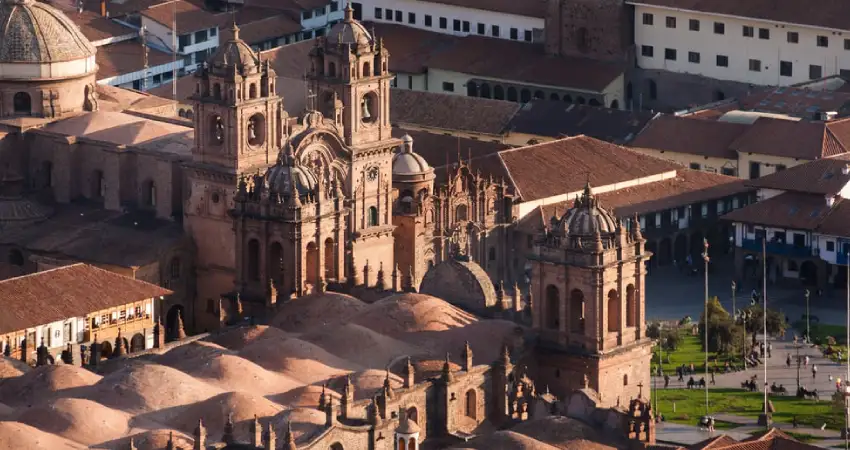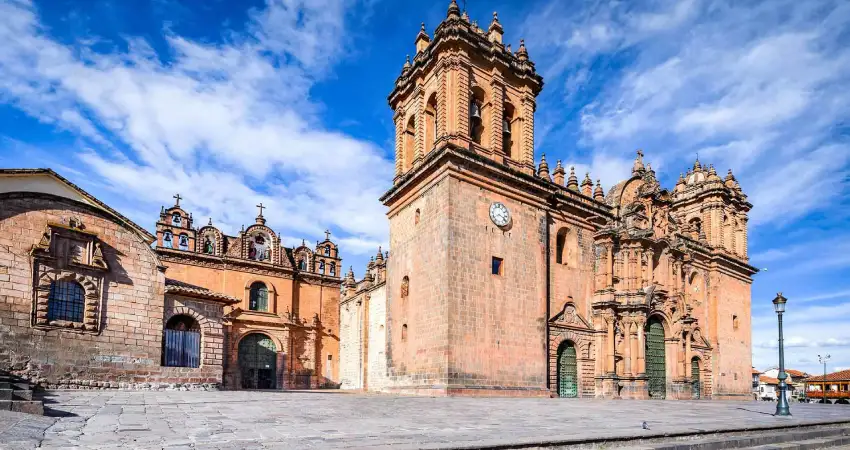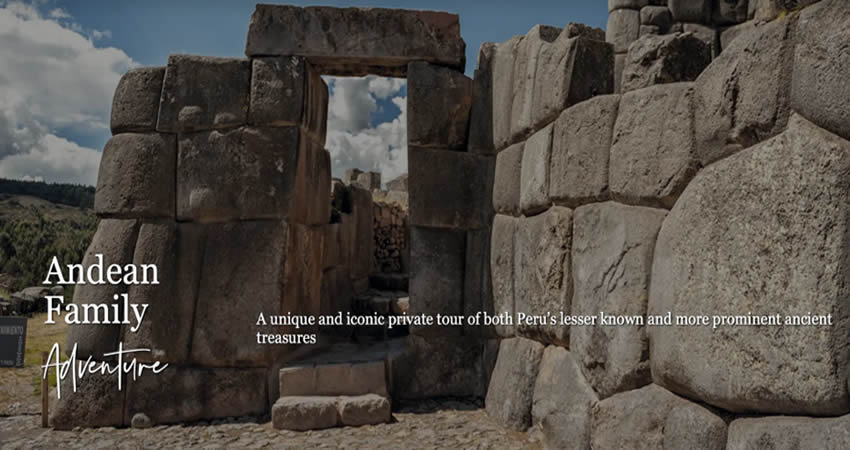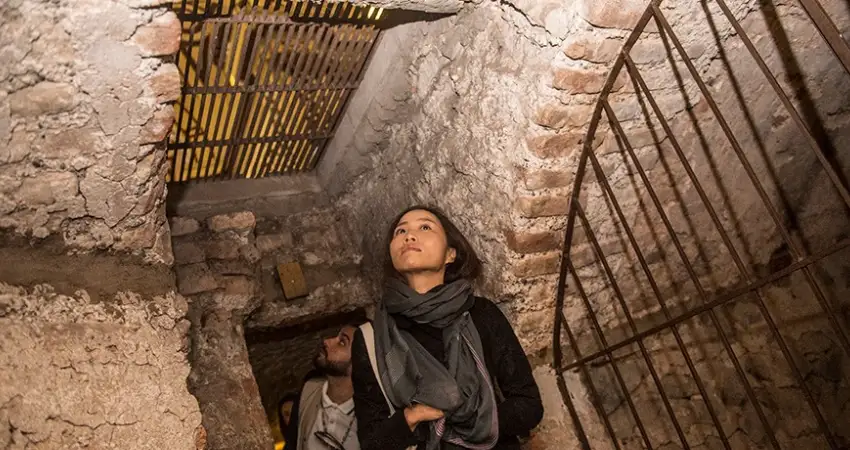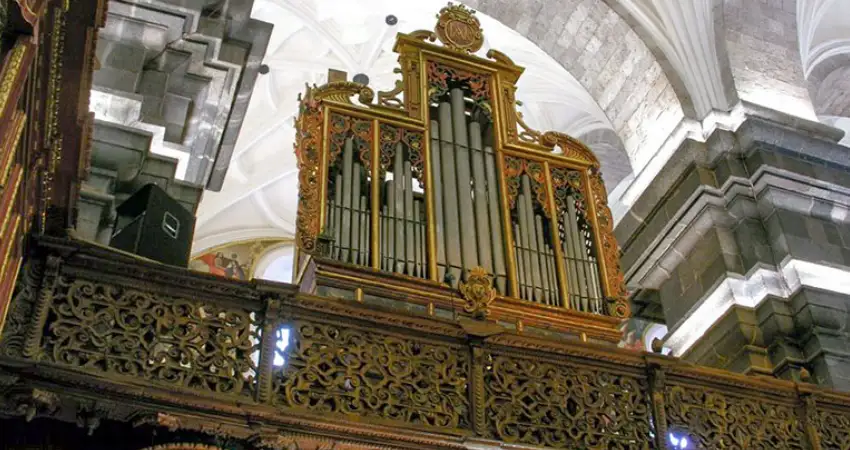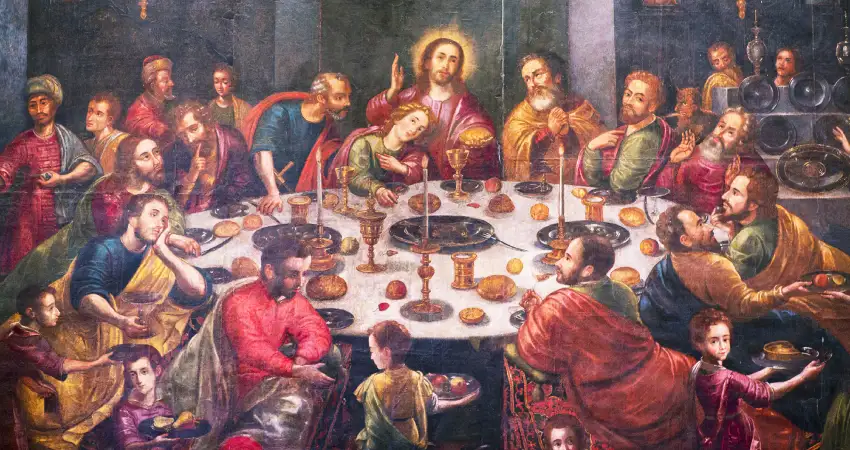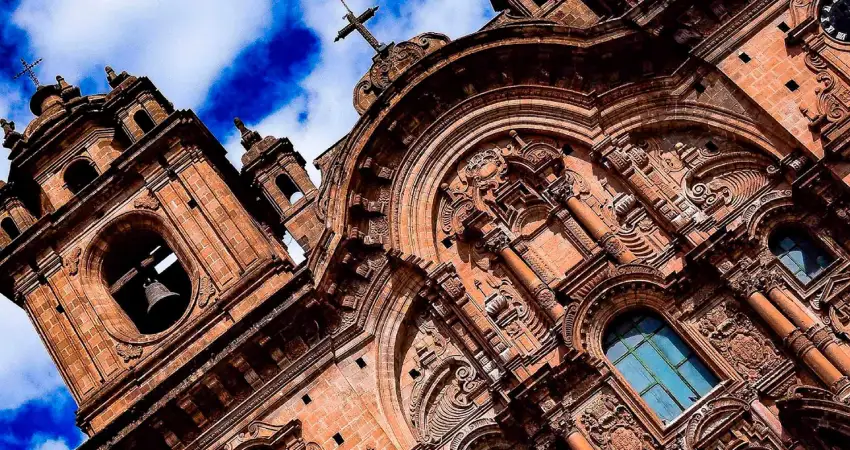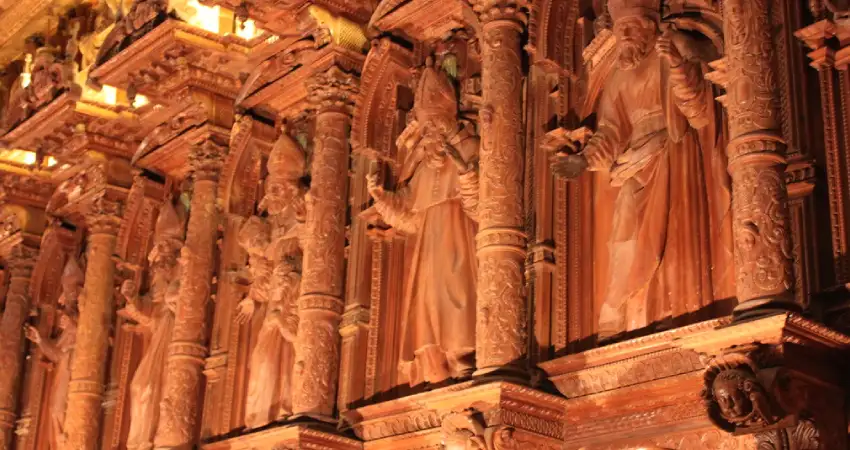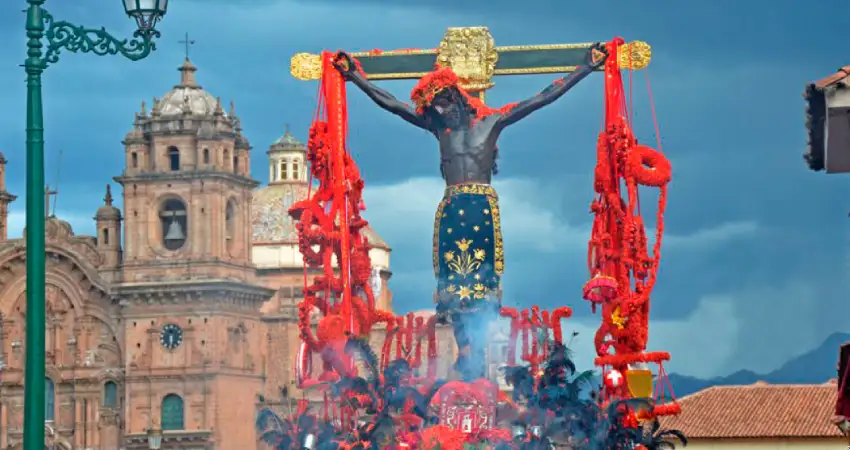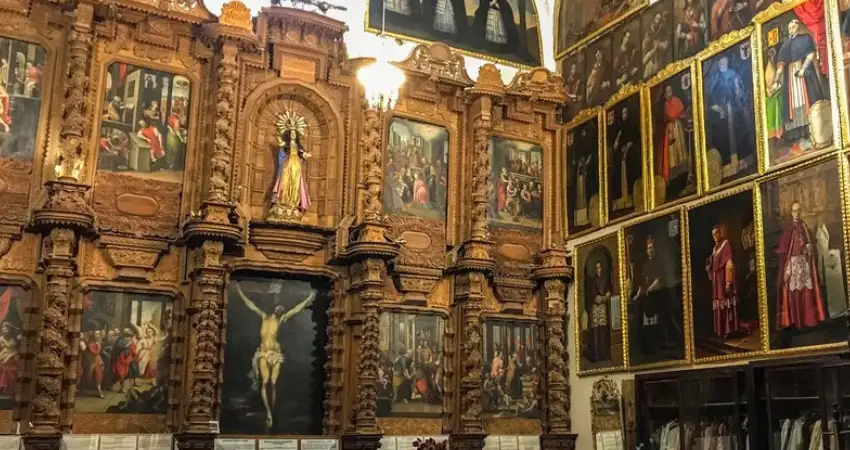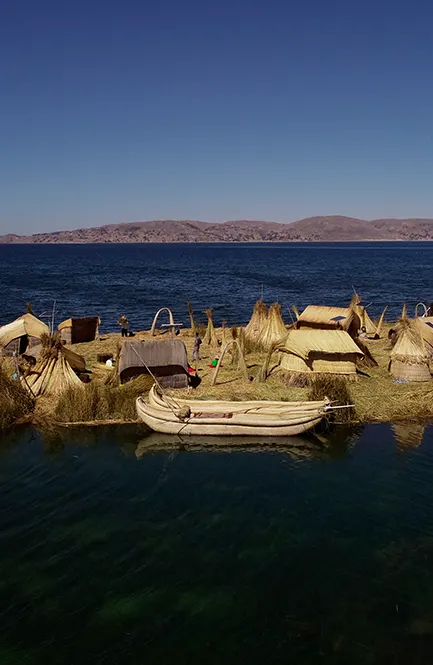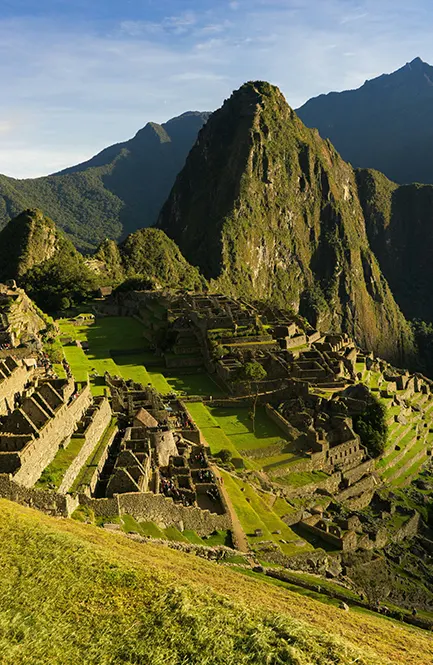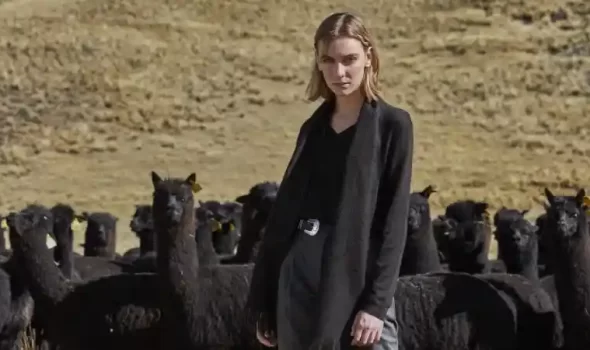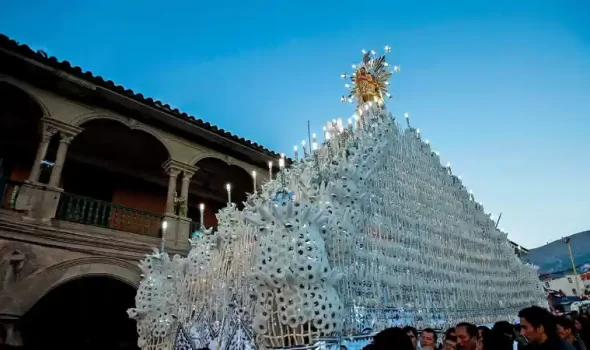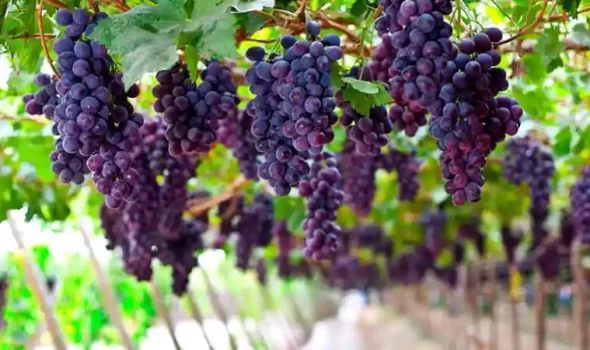1.- INTRODUCTION TO THE CUSCO CATHEDRAL
The Cathedral of Cusco is also known as the basilica Cusco Cathedral dedicated or built to venerate the Assumption of the Virgin Mary which is a Marian representation of the Virgin Mary. The Cusco Cathedral is built on what was formerly an Inca palace built to the god Wiracocha, began its construction in 1560 and took about 100 years to complete.
The particular design of the Cusco Peru Cathedral is rectangular and most of the stones used in the construction of its outer walls came from the archaeological park of Saqsayhuaman because during the extirpation of idolatry the Spanish destroyed much of the archaeological centers that were used for religious and military purposes in order to build most of the colonial houses including religious buildings such as the Cathedral of Cusco. Its front (exterior side) has a baroque style and highlight the huge doors made of wood at the base, this is an extremely important aspect that only contains the Cusco Cathedral. Internally contains 14 cruciform pillars which were elaborated and carved in stone, these same hold the group of 24 grooved ceilings with arched shape, highlighting of these its central nave which is dominated by the main altar where there is an engraved altar specially made of silver where Our Lady of the Assumption is venerated, while in the back you can see an altar carved in pure cedar that has a much older history.
It also highlights the connection that has the Cusco Cathedral with two other churches located at its lateral ends, the first known as the sacred family located on the left side of the Cusco Cathedral which was built in 1723 and its purpose is to represent the importance of the father, son and Holy Spirit which is the symbol of the family. While on the right end of the Cathedral of Cusco is located in the church of the triumph which is probably one of the first churches of Cusco built in 1536.
2.- SOMETHING YOU DIDN’T KNOW ABOUT THE CUSCO CATHEDRAL
“Something that not all people know is that the Cusco Cathedral is the most important religious building in the city, for this reason it is the only church that can have three doors (gospel, epistle and central). However, because the one we know today is the current replacement of the original cathedral is not the only one that has these three doors, next to the original cathedral is also called the church of triumph and although it keeps its doors sealed with stones, historically it will always be remembered as the first Cusco Cathedral.”
3.- WHERE IS THE CUSCO CATHEDRAL LOCATED?
In the heart of the city is located in the main square and in the southeast end is easily where we can locate the Cusco Cathedral Peru, it is easily distinguished from the rest due to the fine finishes that contain high fronts in addition to the two large bell towers. It was built on the ancient Inca temple dedicated to the God Wiracocha and due to the great architecture that obtained the denomination of the Basilica Cathedral of the Assumption of the Virgin of the Assumption.
4.- THINGS YOU CAN FIND IN THE CUSCO CATHEDRAL
4.1.- Catacombs
In all historical places there is always a space where history is compiled, this is precisely what happens under the main altar of the Cusco Peru Cathedral, there is a small crypt where extremely important characters are buried for the church, the archbishops who died in Cusco found their last resting place in this place. On the other hand, under the church of triumph you can also find other crypts where you can find illustrious and important people who were buried here as is the case of Garcilaso de la Vega who wrote the famous chronicles the real comments of the Incas, although not completely because only half of his ashes are here while the rest are located in Spain where he died.
4.2.- Plateria
It is a small chapel that is located in the side area and is where a large collection of religious artifacts containing hundreds of years of history and all are made with high quality silver, among the most representative elements is a silver Bier in relief which is used specifically by the protector of the city, the lord of the tremors. You can also find a piece that resembles a trellis that simulates a miniature temple which is marked with wood and covered with more than 170 kilos of pure silver, this is exposed to the city during the celebration of Corpus Christi.
4.3.- Painting of the Last Supper
This is one of the most famous paintings in the world, first represented by the famous painter Leonardo da Vinci in which he adds certain elements that make it unique, hiding secret messages. In the Peruvian Andes a very similar adaptation was made but with Andean elements, this popular piece of art was made by the painter Marcos Zapata and is located on the wall that is next to the sacristy, with large dimensions of 5 m long and 4 m high presents multiple peculiarities that make it unique, being the central element what is most striking because unlike the original painting that carries a bread here is shown a representation of the guinea pig.
4.4.- Cross of the conquest
This is one of the most iconic and historical elements in parallel within the church of triumph, in the year 1532 when the Spaniards arrived in the Inca city, the priest Vicente de Valverde who later became the first bishop of Cusco carried a cross with the intention of initiating the process of evangelization of all Andean people, after taking possession of the city established that the cross would remain inside the first Cusco Cathedral Peru as a symbol of superiority of European culture over the Andean, this cross is still exposed on the main altar.
| “Travel is adding LIFE to life.” |
4.5.- Choir stalls
This is one of the most appreciated spaces by visitors who come to know the Cusco Cathedral, is located at the base of the central nave, each of these stalls were handmade by skilled craftsmen who handled the wood as clay using a style “plateresque” or “Neo archaic” which was quite popular in Spain during the fifteenth century.
4.6.- Lord of the tremors
An image dedicated to the main protector of the city, it is a statue of black tone that simulates the crucifixion of the son of God, considered as the most important symbol of Christianity. A story tells that an image left Europe bound for Peru which transported a similar statue and during the trip the ship that transported it suffered multiple obstacles due to the high storms, the crew of the ship decided to remove the image from its box and began to pray which quickly calmed the storm and gave it the name of the lord of the storms, Later, when it reached the mainland, it began its journey towards the city of Cusco, however, it found its final place in the town of Huarocondo where it was removed from its box again to be the center of prayer for the many people who had died because of the earthquakes and by bringing peace among the believers, it obtained a new name as the Lord of the Good Death and finally stayed there. It is for this reason that the image that we can appreciate inside the Cusco Cathedral is mainly made of Maguey and not of plaster as it should have been regularly.
4.7.- Sacristia
It is located in the right area of the main altar, it is here where all the usual robes and vestments that are used by the archbishops inside the Cusco Cathedral throughout history are kept, plus of course there is a record of paintings of all the archbishops starting from Vicente de Valverde to Richard Alarcon (current Archbishop of Cusco). You can also find a large altarpiece that bears the name Christ of the Agony which was made with carved cedar wood in baroque style and finally finished by Marcos Zapata in which passages from the life of the apostle St. Peter are shown.
5.- CUSQUENIAN ART STYLE
One of the aspects that stands out inside the Cusco Peru Cathedral is the presence of an incredible amount of canvases and unique pieces of art that differ from other samples that can be found in Spain and places in the world is that they have a very particular touch of the area to this was determined as the style of the Cusco school of art, this particular style combines details belonging to Europe of the seventeenth century in conjunction with some symbolic techniques by coastal experts, this can be represented in certain details such as birds, colors and even very noticeable Andean aspects. The main representatives of this school are undoubtedly Diego Quispe Tito, Basilio Santa Cruz Pumacallao, Basilio Pacheco and the most popular of all Marcos Zapata who produced the famous painting known as the last Andean scene.
Another aspect that highlights the syncretism or mixture of culture can be seen at the time of the construction of a virgin since it is attributed a pyramid-shaped body which in the Andean belief represents the mountains or apus. Within the Andean cosmovision this method was used in order to evangelize people in a more peaceful way.
6.- IMPORTANT INFORMATION FOR VISITORS
| ENTRANCE SCHEDULES 2024 | |
| Monday to Sunday | From 10:00 am until to 18:00 pm |
| UPDATED PRICES | |
| Adults | s/ 40.00 peruvian soles |
| Children and students (Under 17 years) | s/ 20.00 peruvian soles |
7.- FAQs ABOUT THE CUSCO CATHEDRAL
- How long does a typical visit to the Cusco Cathedral take?
Within the usual visit to the Cusco Cathedral is considered about 40 minutes to know the most important and essential, however in a real way the complete visit to the Cusco Cathedral lasts about three or four hours in which a specialized guide will explain in detail each of the pieces of art that are there.
- Can you attend a Mass or religious service at the Cusco Cathedral?
Of course, there are options of masses that are celebrated throughout the day starting from six in the morning in which the priest performs the liturgical act with the intention of expanding the word of God, you can access without restriction to listen and participate in this celebration.
- Is photography allowed inside the Cusco Cathedral?
No, there is a restriction to take pictures inside the Cusco Cathedral because the light of the Slash can affect the paintings in a microscopic way, it is for this reason that as a precautionary measure all visitors at the beginning of the tour should not take pictures.
- Are there guided tours available at the Cusco Cathedral?
On a regular basis you can visit the Cusco Cathedral on your own, there are also audio guide options that you can hire at the door, however the best way to visit it is undoubtedly in the company of a tour guide specialized in religious historical tourism, it will make the experience unforgettable.
Getting to visit Cusco Cathedral is a unique achievement that you can boast about after visiting it in 2024, not all tours include it as a destination so in some cases you can choose to do it independently or in a more personalized service with a trusted travel agency. Auri Peru can help you with this planning, just contact us now to find out how to get started.
“Choose a route, not a routine.”




